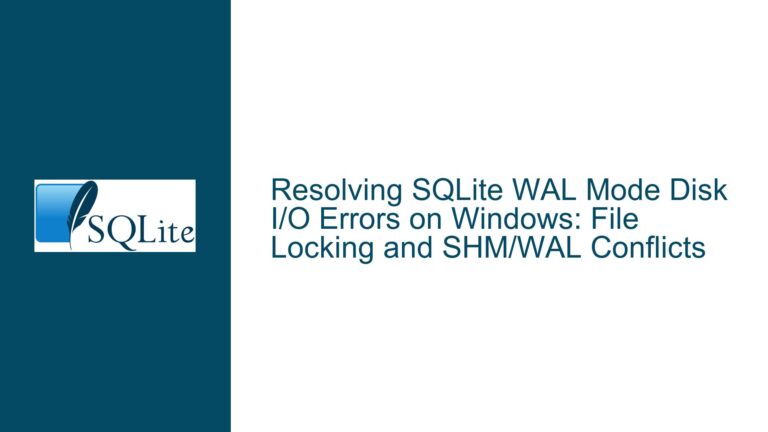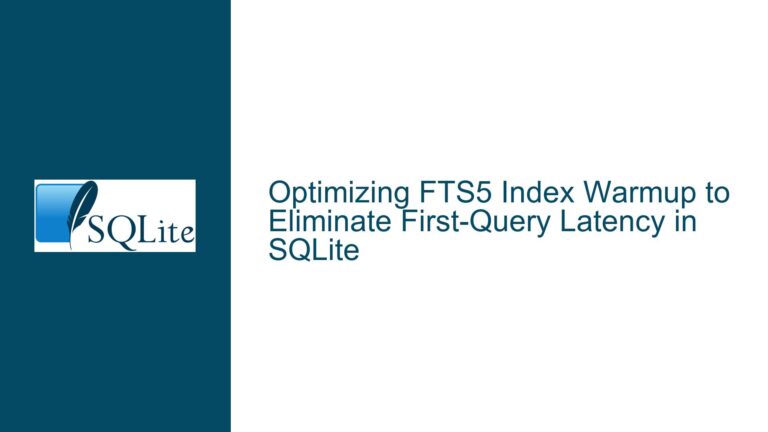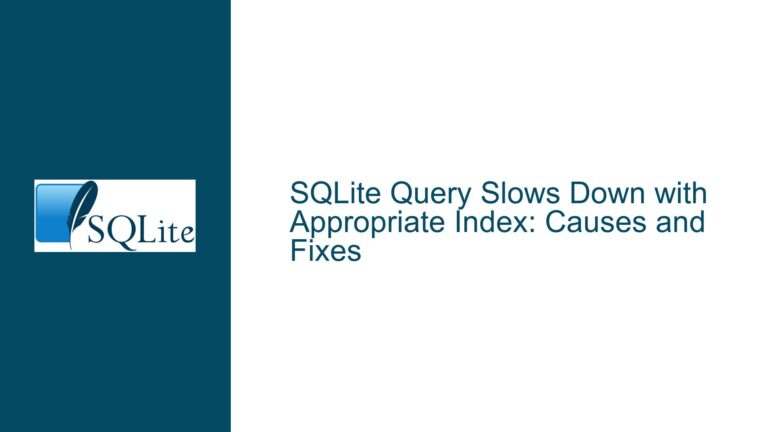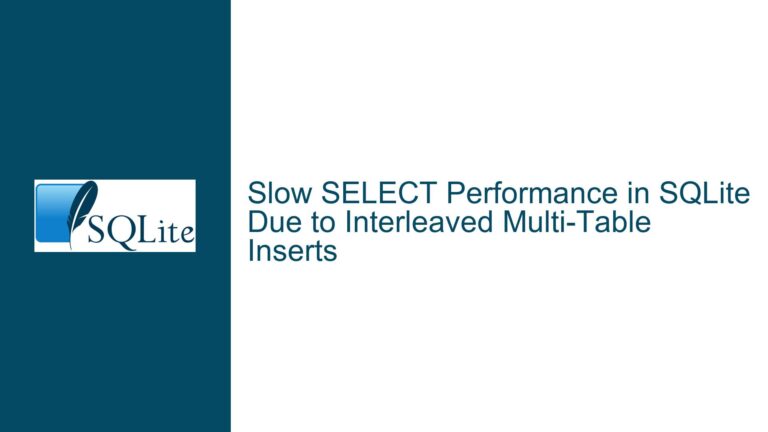Optimizing SQLite B-Tree Depth and Page Utilization Through Overflow Pages
Overflow Pages and Their Impact on B-Tree Depth and Page Utilization
In SQLite, the management of overflow pages plays a critical role in optimizing the depth of B-Trees and the efficient utilization of database pages. Overflow pages are used when a single cell (a record or index entry) is too large to fit entirely within a single database page. Instead of leaving the remaining space on the original page unused, SQLite moves as many bytes as possible to the overflow pages while ensuring that the cell size on the original page does not drop below the minimum embedded payload fraction value specified in the database file header.
The primary benefit of this approach is that it maximizes the number of cells that can be stored on the original page. This is particularly important for interior pages of the B-Tree, where the goal is to maximize fanout—the number of child nodes that can be referenced from a single page. By increasing fanout, the depth of the B-Tree is reduced, which in turn reduces the number of pages that need to be loaded when searching for a record within the tree. This optimization is crucial for maintaining high performance in large databases, where minimizing the number of disk I/O operations is essential.
The minimum embedded payload fraction value, stored at offset 22 in the database file header, ensures that a certain percentage of the cell’s payload remains on the original page. This prevents the original page from becoming too sparse, which could otherwise lead to inefficient use of space and increased B-Tree depth. By carefully balancing the distribution of data between the original page and overflow pages, SQLite achieves an optimal trade-off between space utilization and search performance.
Interrupted Write Operations Leading to Index Corruption
One of the potential risks associated with the use of overflow pages is the possibility of index corruption due to interrupted write operations. When a cell’s payload is split between the original page and overflow pages, any interruption during the write process—such as a power failure or system crash—can leave the database in an inconsistent state. This inconsistency can manifest as corrupted indexes, where the relationships between pages are no longer valid, or as orphaned overflow pages that are no longer referenced by any cell.
Interrupted write operations can occur at any stage of the process, whether during the initial allocation of overflow pages, the movement of bytes to these pages, or the updating of pointers to reflect the new structure. In each case, the database may be left with partially written data, leading to inconsistencies that can affect the integrity of the entire B-Tree. These inconsistencies can be particularly problematic in large databases, where the depth of the B-Tree and the number of pages involved make manual recovery difficult.
To mitigate the risk of index corruption, SQLite employs several mechanisms, including the use of a write-ahead log (WAL) and atomic commit operations. The WAL ensures that changes to the database are first recorded in a separate log file before being applied to the main database file. This allows SQLite to recover from interruptions by replaying the log, thereby restoring the database to a consistent state. Atomic commit operations ensure that either all changes within a transaction are applied, or none are, preventing partial updates that could lead to corruption.
Implementing PRAGMA journal_mode and Database Backup
To further safeguard against index corruption and ensure the integrity of the database, it is essential to implement appropriate journaling modes and regular database backups. SQLite provides the PRAGMA journal_mode command, which allows you to configure the journaling mode used by the database. The available modes include DELETE, TRUNCATE, PERSIST, MEMORY, WAL, and OFF. Each mode offers different trade-offs between performance and reliability, and the choice of mode should be guided by the specific requirements of your application.
The WAL mode, in particular, is highly recommended for applications that require high concurrency and robustness against interruptions. In WAL mode, all changes are first written to a separate WAL file, and the main database file is updated only during a checkpoint operation. This approach minimizes the risk of corruption by ensuring that the main database file is always in a consistent state, even if an interruption occurs during a write operation. Additionally, WAL mode allows multiple readers to access the database simultaneously while a single writer is active, improving overall performance.
Regular database backups are another critical component of a robust data management strategy. Backups should be performed using the SQLite Online Backup API, which allows you to create a consistent snapshot of the database without blocking other operations. The backup process involves copying the database file and the associated WAL file (if WAL mode is enabled) to a secure location. In the event of a failure, the backup can be used to restore the database to its last consistent state, minimizing data loss and downtime.
In addition to these measures, it is important to monitor the health of the database and perform periodic maintenance tasks, such as vacuuming and integrity checks. The VACUUM command can be used to rebuild the database file, reclaiming unused space and defragmenting the data. The PRAGMA integrity_check command can be used to verify the integrity of the database, identifying and reporting any inconsistencies that may indicate corruption. By combining these techniques with proper journaling and backup strategies, you can ensure the long-term reliability and performance of your SQLite database.
In conclusion, the use of overflow pages in SQLite is a powerful mechanism for optimizing B-Tree depth and page utilization. However, it is essential to be aware of the potential risks associated with interrupted write operations and to implement appropriate safeguards to protect against index corruption. By configuring the journaling mode, performing regular backups, and maintaining the database, you can ensure that your SQLite database remains robust and efficient, even in the face of unexpected interruptions.






